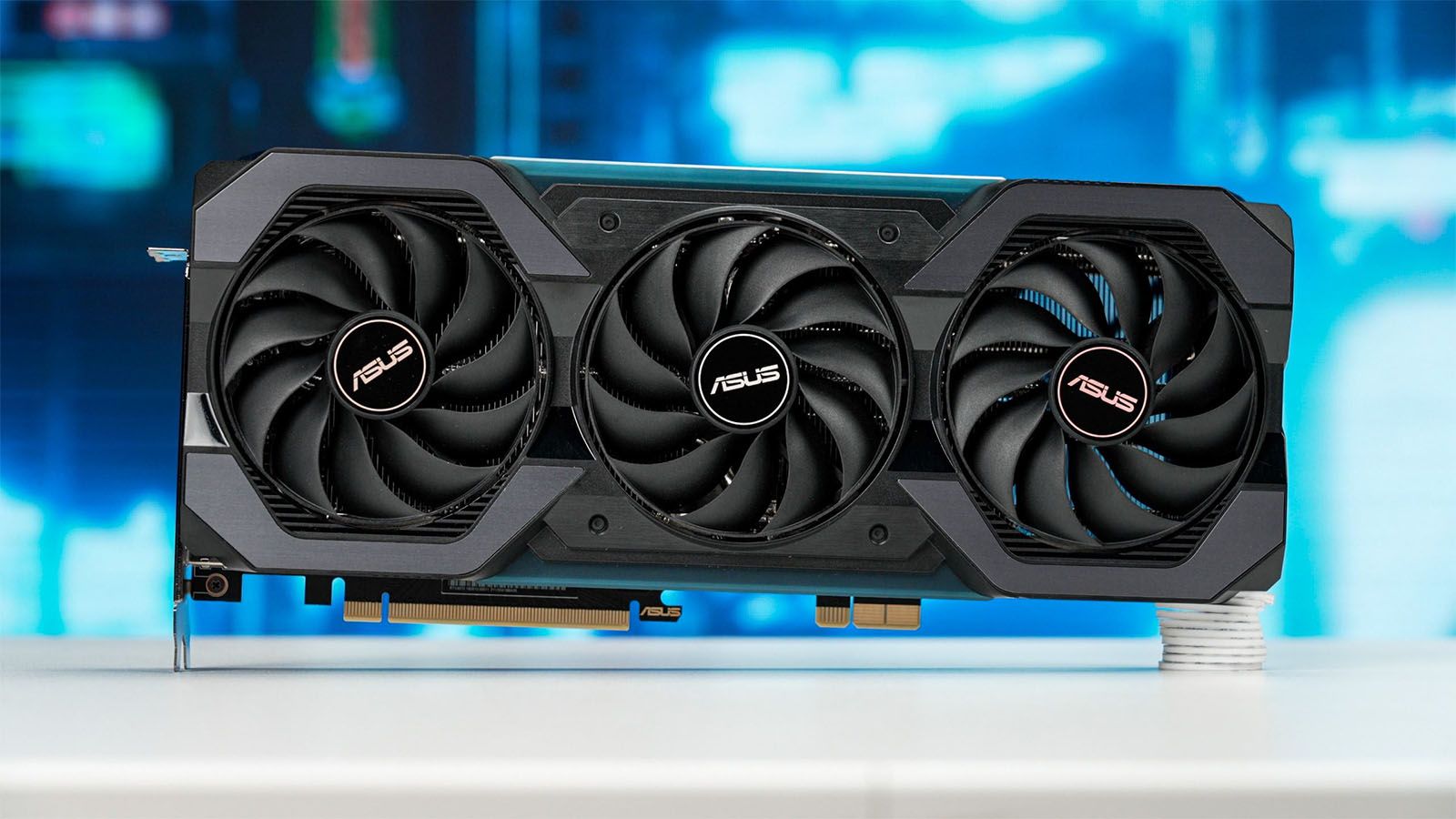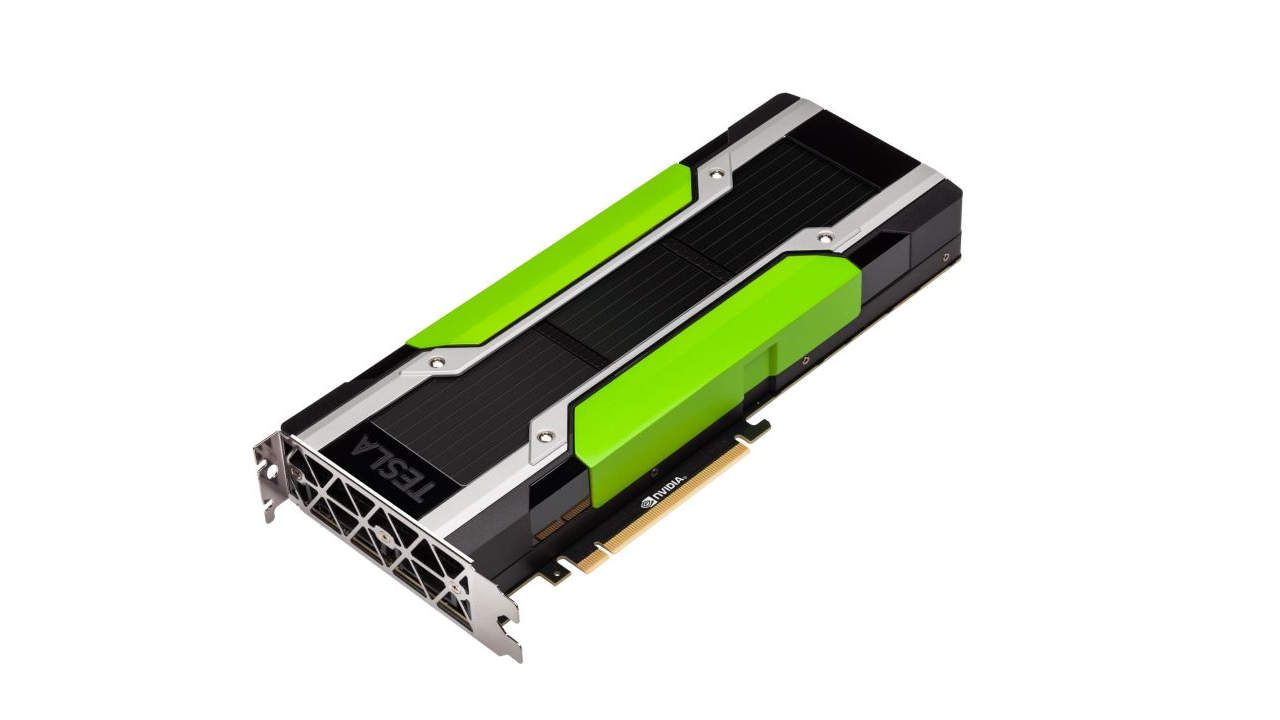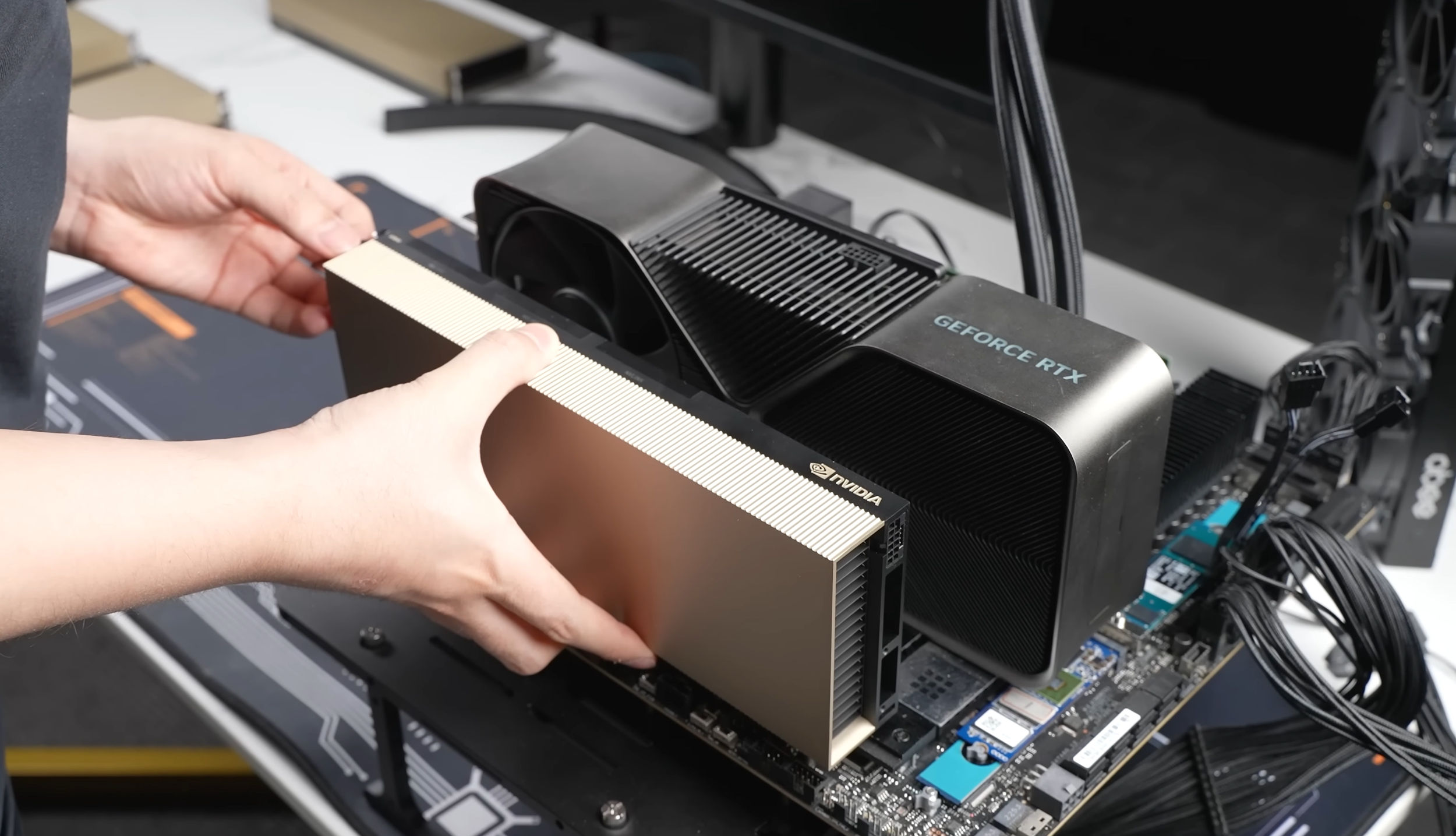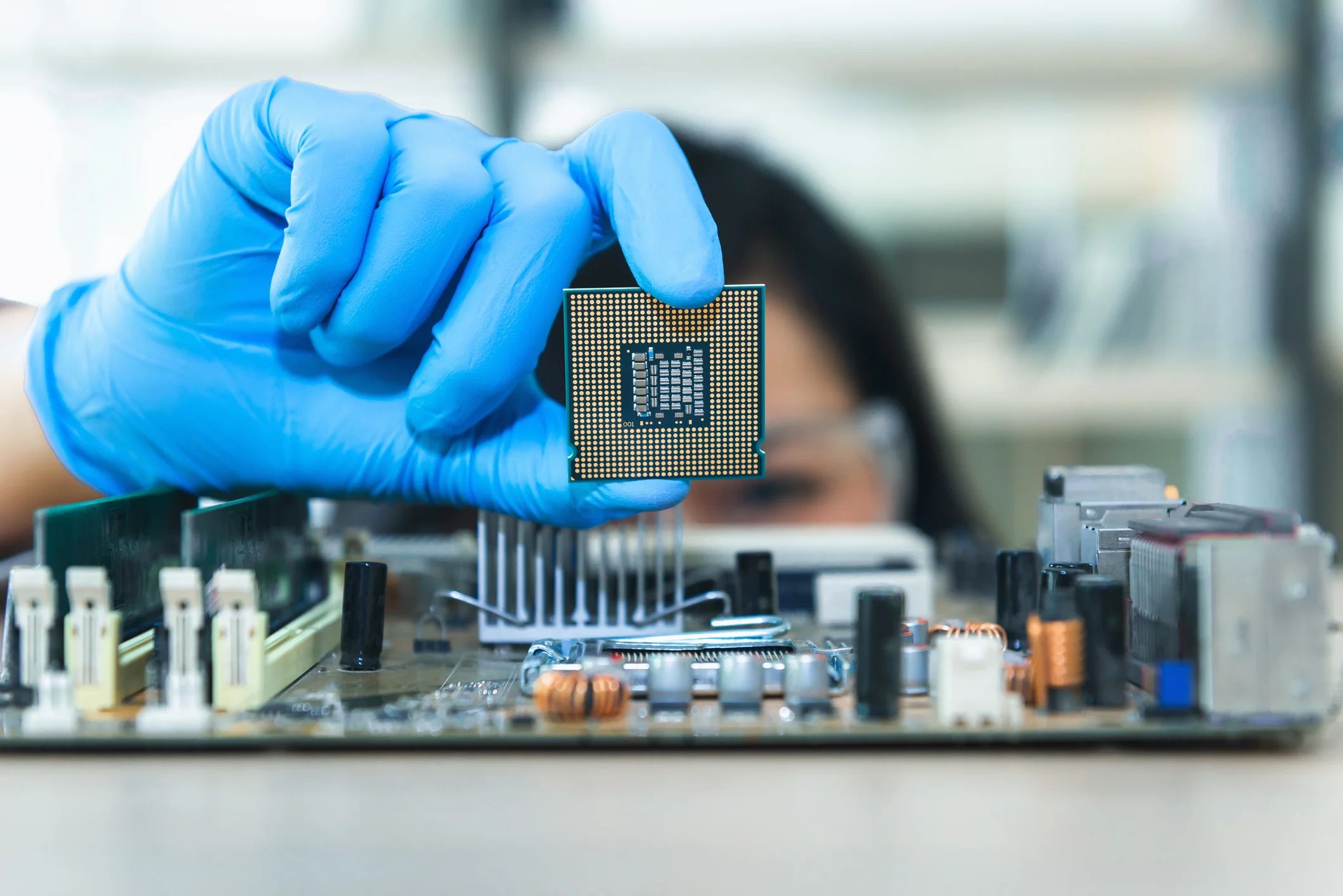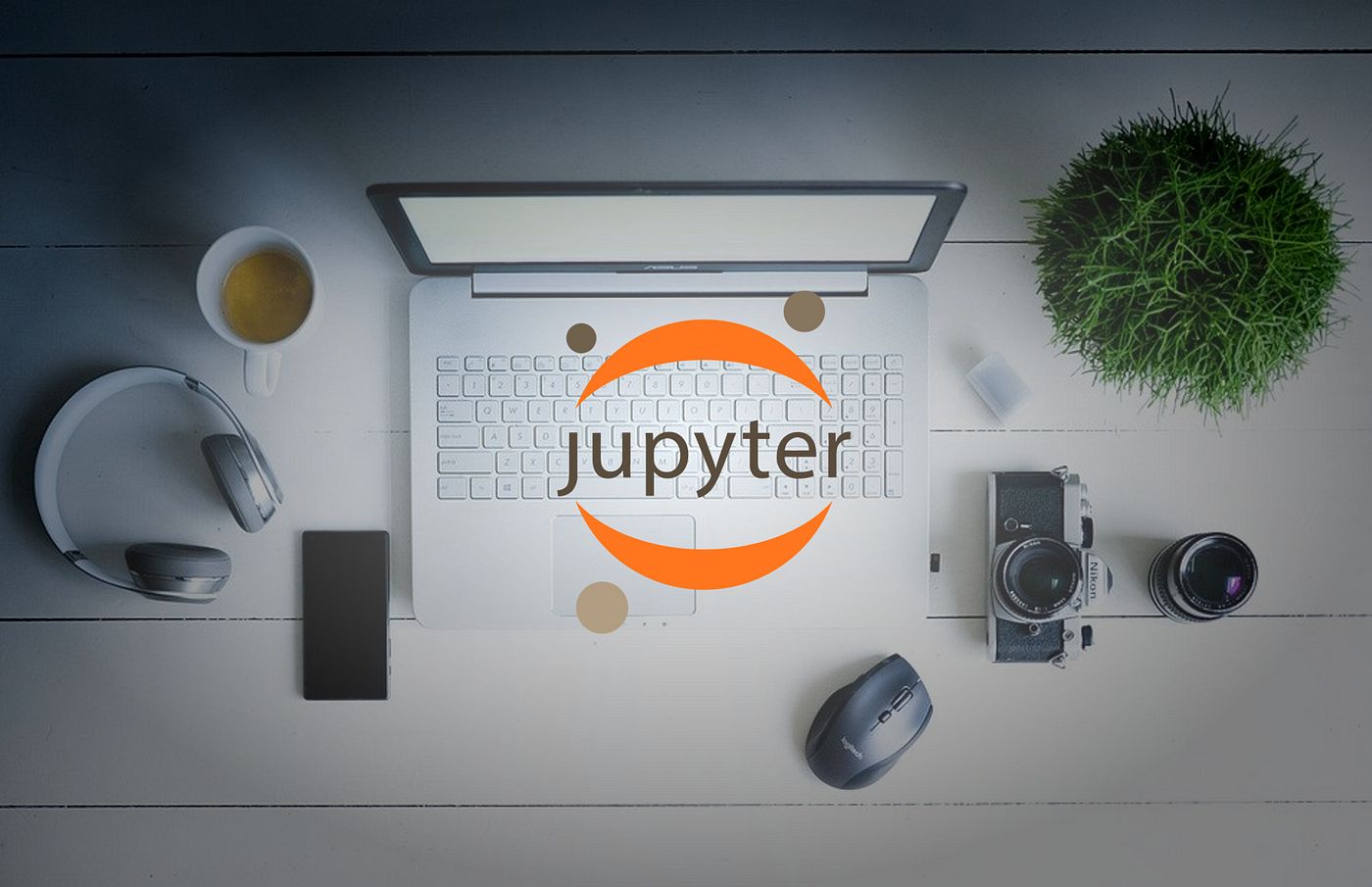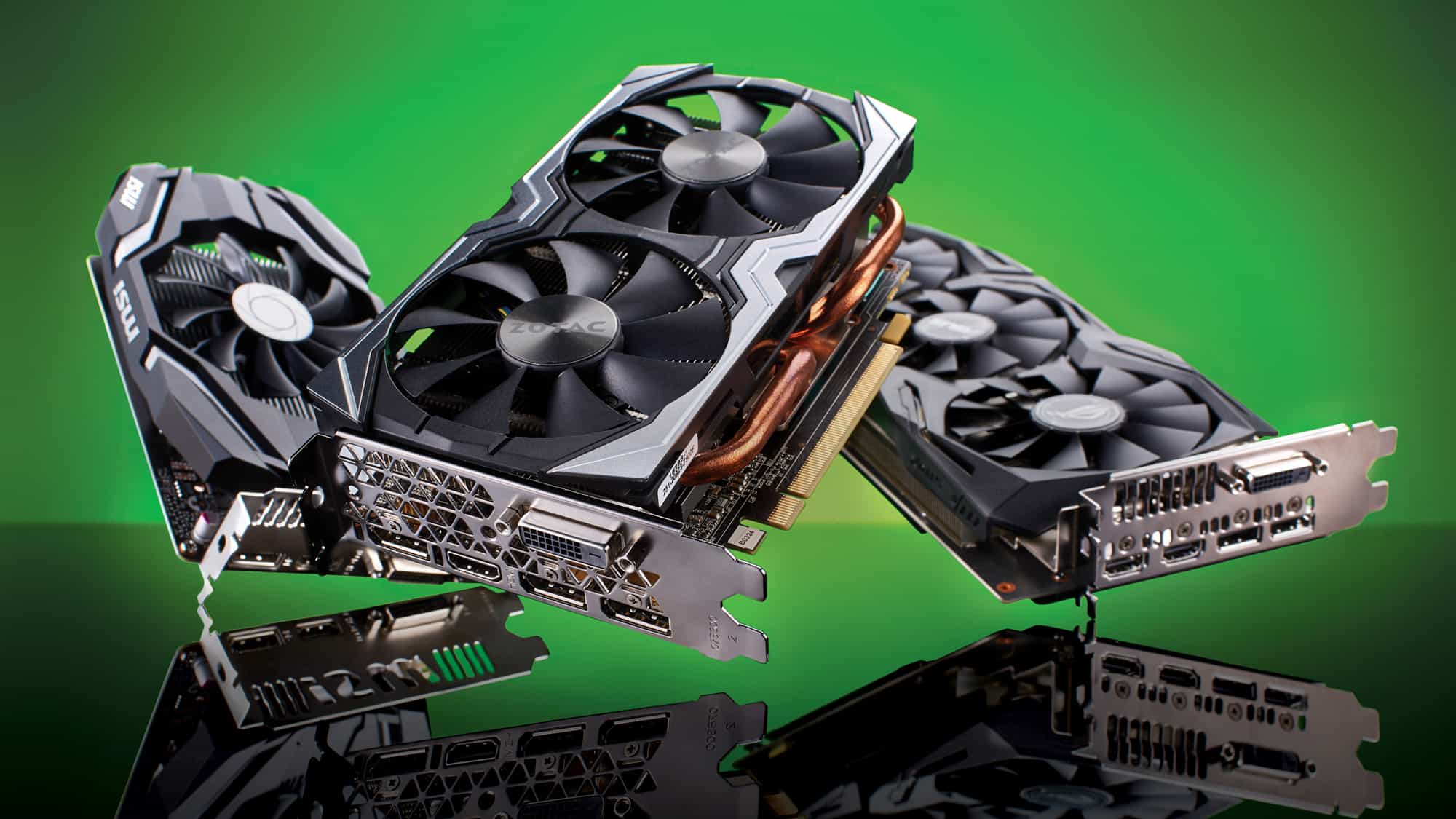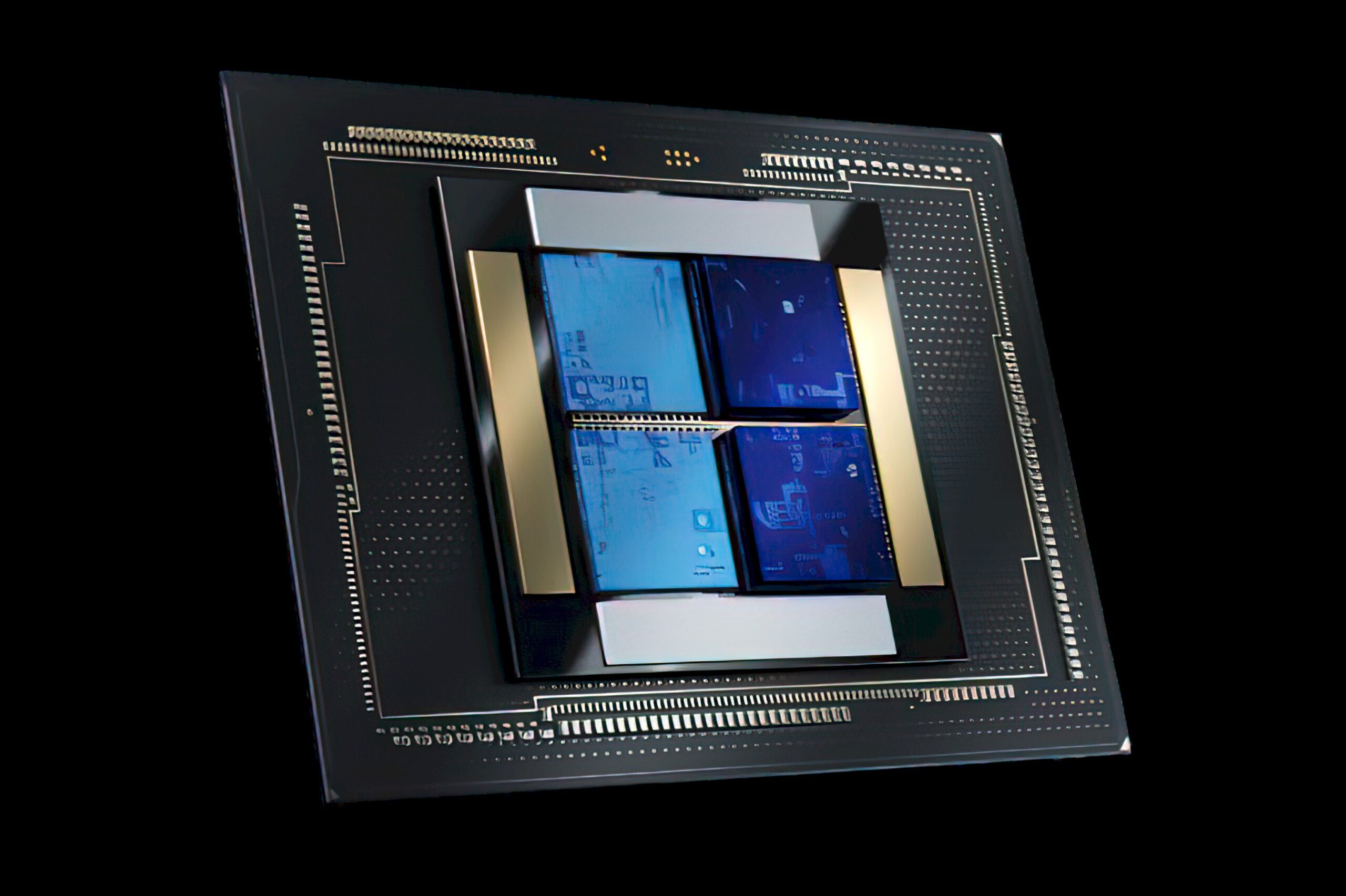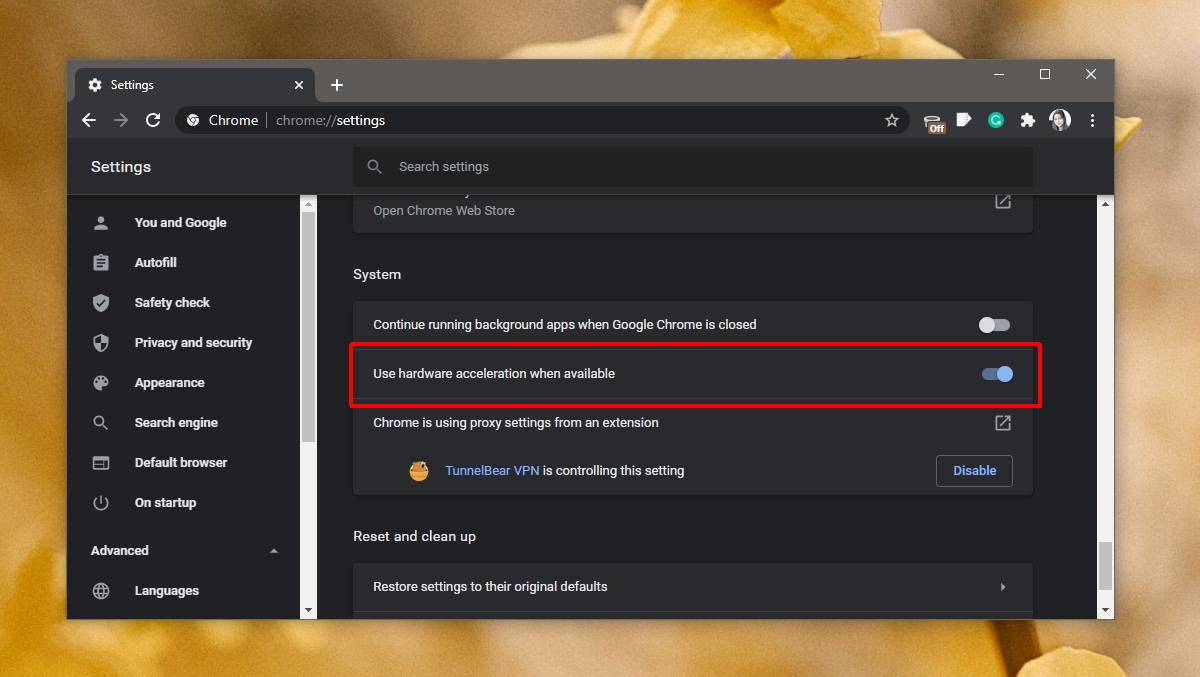Introduction
As technology continues to advance, so do the demands we place on our computers. From graphic-intensive video games to complex video editing software, our computers need to be equipped with robust hardware to handle these resource-intensive tasks. One crucial component that plays a significant role in enhancing the performance of certain applications is GPU acceleration.
GPU stands for Graphics Processing Unit, which is a specialized microprocessor designed to handle complex graphics and calculations quickly and efficiently. Traditionally, GPUs were primarily used for rendering graphics in video games and animations. However, with the advent of GPU acceleration, these powerful processors are now being utilized to accelerate various tasks beyond just rendering.
GPU acceleration leverages the immense parallel processing power of GPUs to offload specific computations from the CPU (Central Processing Unit). By dividing the workload and utilizing the GPU’s hundreds or even thousands of cores, applications can see a significant boost in performance and speed.
In this article, we will explore the concept of GPU acceleration, its benefits, and how to enable it on different operating systems. Whether you’re a gamer, graphic designer, or video editor, understanding how to harness the power of GPU acceleration can greatly enhance your computing experience.
What is GPU Acceleration?
GPU acceleration, also known as GPU computing or GPU acceleration computing, is the process of utilizing the power of a computer’s Graphics Processing Unit (GPU) to perform computations and speed up specific tasks. While GPUs are primarily designed for handling graphics-related operations, their parallel processing capabilities make them highly effective for accelerating tasks in various fields.
Unlike the Central Processing Unit (CPU), which consists of a few cores optimized for sequential processing, GPUs are equipped with hundreds, or even thousands, of smaller cores optimized for parallel processing. This means that GPUs can execute multiple tasks simultaneously, making them ideal for computationally intensive workloads.
GPU acceleration is particularly beneficial for tasks that involve complex calculations, simulations, image and video processing, machine learning, and data analysis. These tasks traditionally rely heavily on the CPU, but by offloading the workload to the GPU, they can be completed much faster and more efficiently.
GPU acceleration is made possible through the use of specialized APIs (Application Programming Interfaces) such as CUDA (Compute Unified Device Architecture) by NVIDIA or OpenCL (Open Computing Language), which provide software developers with the tools to harness the power of GPUs for general-purpose computing.
Examples of applications that benefit from GPU acceleration include:
- Video Editing Software: Video editing tools, such as Adobe Premiere Pro and DaVinci Resolve, use GPU acceleration to speed up video encoding, decoding, and rendering processes, allowing for real-time previews and faster export times.
- 3D Modeling and Rendering: Applications like Autodesk Maya and Blender rely on GPU acceleration to handle complex 3D modeling, rendering, and visualization tasks, reducing rendering times and improving overall performance.
- Scientific Simulations: GPU acceleration is crucial for scientific simulations in fields such as physics, chemistry, and biology. It enables faster calculations and simulations, leading to quicker insights and discoveries.
- Machine Learning: Deep learning frameworks like TensorFlow and PyTorch utilize GPU acceleration to train neural networks and process large datasets efficiently, accelerating the training process significantly.
By harnessing the power of GPU acceleration, individuals and organizations can unlock faster processing speeds, improved performance, and enhanced productivity, making it an invaluable technology in today’s computing landscape.
Why Enable GPU Acceleration?
Enabling GPU acceleration offers several compelling benefits, making it a worthwhile feature to enable on your computer. Here are some key reasons why you should consider enabling GPU acceleration:
- Improved Performance: GPU acceleration is designed to significantly enhance the performance of certain tasks by offloading them from the CPU and utilizing the parallel processing power of the GPU. This can lead to faster render times, quicker data processing, and smoother real-time interactions, resulting in a more efficient and enjoyable user experience.
- Reduced Render Times: For professionals who work with graphic-intensive applications such as video editing or 3D rendering software, GPU acceleration can dramatically reduce render times. By distributing the compute-intensive tasks across the GPU’s numerous cores, complex calculations and rendering processes can be completed much faster, saving valuable time and increasing productivity.
- Real-Time Interactions: Enabling GPU acceleration allows for real-time interactions in applications that require quick responses, such as gaming or video editing. By leveraging the GPU’s parallel processing capabilities, these applications can deliver seamless and responsive experiences, ensuring smoother gameplay, accurate video playback, and instant visual effects preview.
- Enhanced Visual Quality: GPU acceleration can improve the visual quality of graphics-intensive applications. It enables advanced rendering techniques, such as anti-aliasing, high-resolution textures, realistic lighting effects, and complex shaders. By leveraging the GPU’s capabilities, applications can deliver stunning visuals with greater detail, immersion, and realism.
- Efficient Data Processing: Tasks that involve large amounts of data processing, such as machine learning or scientific simulations, can benefit from GPU acceleration. The parallel processing power of the GPU enables these applications to handle massive datasets and complex calculations with improved efficiency and faster results.
- Energy Efficiency: GPUs are designed with efficiency in mind, providing high performance while consuming less power compared to CPUs. By enabling GPU acceleration, you can take advantage of the GPU’s efficiency, reducing energy consumption and saving on electricity costs.
Overall, enabling GPU acceleration can revolutionize your computing experience, providing improved performance, reduced render times, real-time interactions, enhanced visuals, efficient data processing, and energy efficiency. If your computer is equipped with a capable GPU and you frequently engage in tasks that can benefit from GPU acceleration, it is highly recommended to enable this feature to unlock its full potential.
Checking Your GPU
Before enabling GPU acceleration, it is essential to ensure that your computer has a compatible GPU and that it meets the minimum requirements for GPU-accelerated tasks. Here are a few steps you can take to check your GPU:
- Device Manager: On Windows, you can open the Device Manager by right-clicking on the Start button and selecting “Device Manager.” Expand the “Display adapters” category, and you will see the name and model of your GPU listed.
- System Information: On both Windows and macOS, you can access the System Information utility to find details about your GPU. On Windows, press the Win + R keys, type “msinfo32” in the Run dialog box, and hit Enter. In macOS, click on the Apple menu, select “About This Mac,” and click on the “System Report” or “More Info” button.
- Graphics Card Software: Many GPU manufacturers provide dedicated software to manage and monitor the GPU. These utilities often display detailed information about your GPU, including the model, driver version, and current performance settings. Check the manufacturer’s website for the appropriate software for your GPU.
- Third-Party Tools: There are several third-party software tools available that can provide comprehensive information about your GPU, including temperature, clock speeds, and driver versions. Examples of such tools include GPU-Z, Speccy, and AIDA64.
Once you have determined the model and specifications of your GPU, check the requirements of the specific application or task you want to enable GPU acceleration for. Most software or applications will list the minimum and recommended GPU requirements on their official websites or documentation. Ensure that your GPU meets these requirements to ensure smooth and optimal performance.
If you discover that your computer does not have a compatible GPU or that it does not meet the necessary requirements, you may need to either upgrade your existing GPU or consider alternative options for GPU acceleration.
Remember that GPU acceleration is most beneficial for tasks that involve complex computations, graphics rendering, and data processing. If you primarily use your computer for basic tasks such as web browsing, word processing, or light gaming, GPU acceleration may not provide significant performance improvements.
Checking your GPU is a crucial step before enabling GPU acceleration. It ensures compatibility and helps you make informed decisions regarding hardware upgrades or alternative solutions for GPU-accelerated tasks.
Enabling GPU Acceleration on Windows
Enabling GPU acceleration on Windows can vary depending on the specific application or task you want to enable it for. However, here are some general steps you can follow to enable GPU acceleration on your Windows computer:
- Update GPU Drivers: Before enabling GPU acceleration, ensure that you have the latest drivers installed for your GPU. Visit the website of your GPU manufacturer (such as NVIDIA or AMD) and download the latest drivers suitable for your GPU model and Windows version. Install the drivers and restart your computer if prompted.
- Application Settings: Many applications that support GPU acceleration have options within their settings to enable or configure GPU acceleration. Look for a “Preferences” or “Settings” menu within the application and navigate to the “Performance” or “Hardware Acceleration” section. Enable or adjust the GPU acceleration settings as desired.
- Graphics Control Panel: If your GPU has a dedicated control panel software, such as NVIDIA Control Panel or AMD Radeon Settings, you may find additional options to enable GPU acceleration. Open the control panel software and explore the settings related to GPU acceleration. Enable it if available.
- Windows Graphics Settings: In some cases, Windows itself provides options for managing GPU acceleration. Open the Windows Settings by pressing the Win + I keys, then navigate to “System” > “Display” and click on “Graphics settings” or “Advanced graphics settings.” Here you may find options to specify which applications should use the GPU for acceleration.
- Restart the Application: After enabling GPU acceleration or making changes to the settings, restart the application for the changes to take effect. This ensures that the application utilizes the GPU for acceleration during its operation.
Keep in mind that not all applications or tasks support GPU acceleration, so it’s crucial to check the documentation or support resources of the specific application or task you want to enable GPU acceleration for. Additionally, enabling GPU acceleration may have different names or settings within different applications, so be sure to explore the options specific to the software you are using.
Enabling GPU acceleration on Windows can greatly enhance the performance and efficiency of various tasks. By leveraging the power of your GPU, you can experience faster render times, improved graphics processing, and smoother interactions in GPU-accelerated applications.
Enabling GPU Acceleration on macOS
Enabling GPU acceleration on macOS involves adjusting the settings within the operating system as well as within specific applications that support GPU acceleration. Here are some general steps to enable GPU acceleration on your macOS computer:
- Update macOS: Ensure that your macOS is up to date by going to the Apple menu, selecting “System Preferences,” and clicking on “Software Update.” Install any available updates to ensure compatibility with the latest GPU acceleration technologies.
- Update GPU Drivers (if applicable): In macOS, GPU drivers are typically included with the operating system updates. However, if you have a third-party GPU installed, you may need to visit the manufacturer’s website to download and install the latest drivers for your GPU model.
- Application Settings: Within the specific application you want to enable GPU acceleration, navigate to the “Preferences” or “Settings” menu. Look for options related to graphics, acceleration, or performance. Enable GPU acceleration if available and adjust any additional settings as necessary.
- macOS Graphics Settings: macOS provides system-level graphics settings that can affect GPU acceleration. Open the Apple menu, select “System Preferences,” and click on “Energy Saver” or “Displays,” depending on your macOS version. Look for any options related to graphics performance or GPU acceleration and ensure they are set to “Automatic” or “High Performance.”
- Graphics Control Panel (if applicable): If your GPU manufacturer provides a control panel utility, such as the NVIDIA Control Panel or AMD Radeon Software, open it and explore the settings related to GPU acceleration. Enable GPU acceleration if available.
- Restart the Application: After making changes to the GPU acceleration settings, close and restart the specific application to ensure it utilizes the GPU for acceleration during its operation.
It’s important to note that not all applications or tasks on macOS support GPU acceleration. Check the documentation or support resources of the specific application or task you want to enable GPU acceleration for to determine if it is supported.
Enabling GPU acceleration on macOS can lead to faster rendering, improved graphics performance, smoother animations, and overall enhanced user experience in GPU-accelerated applications. By taking advantage of the GPU’s processing power, you can optimize your macOS computer for resource-intensive tasks and unlock its full potential.
Enabling GPU Acceleration on Linux
Enabling GPU acceleration on Linux involves configuring the system and specific applications to harness the power of your GPU. While the exact steps can vary depending on the distribution and GPU drivers you are using, here are some general guidelines to enable GPU acceleration on Linux:
- Install GPU Drivers: Depending on your GPU model, you may need to install the appropriate drivers for Linux. Open the package manager of your Linux distribution and search for the drivers provided by your GPU manufacturer. Install the drivers and follow any additional instructions provided by the manufacturer.
- Configure X11 or Wayland: Linux uses either the X11 or Wayland display server. Depending on the server you are using, configure the appropriate settings to enable GPU acceleration. Edit the configuration files, such as
xorg.conffor X11 or specific Wayland configuration files, and ensure that the necessary options for GPU acceleration are enabled. - Application Settings: Most applications that support GPU acceleration have settings within their preferences or configuration files to enable it. Look for options related to GPU acceleration, hardware acceleration, or performance. Enable GPU acceleration if available and adjust any additional settings as necessary.
- Graphics Control Panel (if applicable): If your GPU manufacturer provides a control panel utility for Linux, open it and explore the settings related to GPU acceleration. Enable GPU acceleration if available and make any necessary adjustments.
- Restart the Application: After making changes to the GPU acceleration settings, close and restart the specific application to ensure it utilizes the GPU for acceleration during its operation.
It’s important to note that GPU acceleration on Linux can be highly dependent on the specific GPU drivers and underlying libraries that are installed. Some applications may require additional libraries or packages to enable GPU acceleration, so be sure to check the application’s documentation or support resources for any specific requirements.
Enabling GPU acceleration on Linux can offer significant performance improvements for various tasks such as gaming, video editing, machine learning, and scientific simulations. By making the necessary configurations and settings adjustments, you can leverage the power of your GPU and unlock the full potential of your Linux system.
Troubleshooting GPU Acceleration Issues
While GPU acceleration can greatly enhance performance and efficiency, there may be instances where you encounter issues or performance setbacks. Here are some common troubleshooting steps to address GPU acceleration issues:
- Update GPU Drivers: Outdated or incompatible GPU drivers can cause issues with GPU acceleration. Visit the website of your GPU manufacturer and download the latest drivers for your specific GPU model and operating system. Install the drivers and restart your computer if prompted.
- Check Application Compatibility: Ensure that the specific application or task you are trying to enable GPU acceleration for is compatible with your GPU and operating system. Check the application’s documentation or support resources for any known compatibility issues or recommended settings.
- Adjust GPU Power Settings: In some cases, GPU acceleration issues may be related to power settings. Open the control panel or settings for your GPU and check if there are any power-saving modes or settings that may limit the GPU’s performance. Set the power settings to a high-performance mode if available.
- Monitor GPU Temperatures: Excessive heat can cause the GPU to throttle, reducing performance. Monitor the temperatures of your GPU using third-party software tools. If temperatures are too high, consider cleaning the GPU’s cooling system, improving the airflow in your computer case, or adjusting the fan curve to increase cooling.
- Check System Resources: GPU acceleration relies on the availability of system resources, including CPU, RAM, and VRAM (GPU memory). Insufficient resources may lead to performance issues. Close any unnecessary applications or processes that may consume system resources, and consider upgrading your hardware if it consistently struggles to meet the demands of GPU-accelerated tasks.
- Disable Overclocking: If you have overclocked your GPU, it may be unstable and cause issues with GPU acceleration. Reset your GPU settings to default or lower the overclocking settings to see if it resolves the issues.
- Reinstall GPU Drivers: If updating the GPU drivers did not resolve the issues, consider uninstalling the current drivers completely and reinstalling them from scratch.
- Consult Manufacturer Support: If you have tried all the troubleshooting steps and are still experiencing issues, reach out to the support resources provided by your GPU manufacturer or the application you are using. They may have specific recommendations or solutions based on your hardware and software configuration.
Remember that troubleshooting GPU acceleration issues can be complex and may require trial and error. Don’t hesitate to seek help from online forums or communities where users with similar hardware or software setups can provide insights and solutions.
By carefully troubleshooting and addressing any GPU acceleration issues, you can ensure smooth and optimal performance in GPU-accelerated applications and tasks.
Conclusion
GPU acceleration is a powerful technology that harnesses the parallel processing capabilities of Graphics Processing Units (GPUs) to significantly enhance the performance of various tasks. By offloading computationally intensive workloads from the CPU to the GPU, tasks such as rendering graphics, video editing, 3D modeling, machine learning, and scientific simulations can be completed faster and more efficiently.
In this article, we explored the concept of GPU acceleration and its benefits. We discussed how GPU acceleration leverages the parallel processing power of GPUs to improve performance, reduce render times, enable real-time interactions, enhance visual quality, and achieve more efficient data processing. Whether you’re a gamer, graphic designer, video editor, scientist, or data analyst, enabling GPU acceleration can have a significant positive impact on your workflow and productivity.
We also provided guidelines on how to check your GPU, enable GPU acceleration on Windows, macOS, and Linux, and troubleshoot common issues that may arise. By following these steps and ensuring compatibility with the specific applications and tasks you’re working with, you can make the most of your GPU and unlock its full potential.
However, it’s important to note that enabling GPU acceleration is not always necessary or beneficial for every task or computer configuration. For less resource-intensive tasks or older hardware, GPU acceleration may not provide noticeable improvements. It’s essential to assess your specific needs, hardware capabilities, and software requirements before deciding to enable GPU acceleration.
In conclusion, GPU acceleration is a game-changing technology that utilizes the power of GPUs to enhance performance, speed up computations, and deliver better user experiences in a wide range of applications. By understanding how to enable and optimize GPU acceleration, you can take your computing capabilities to new heights and unlock new possibilities in your digital endeavors.







